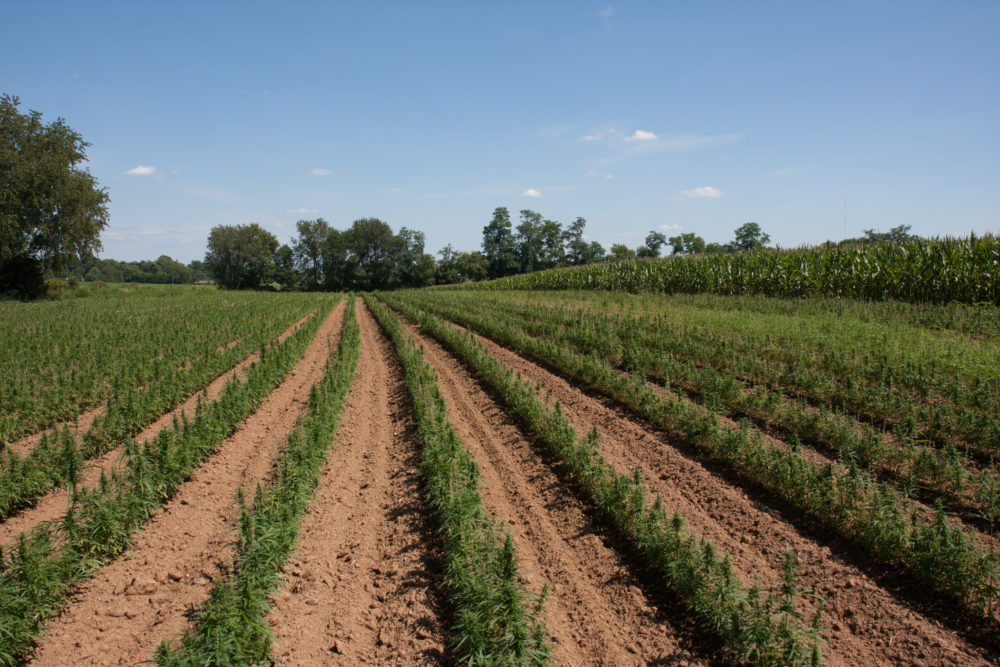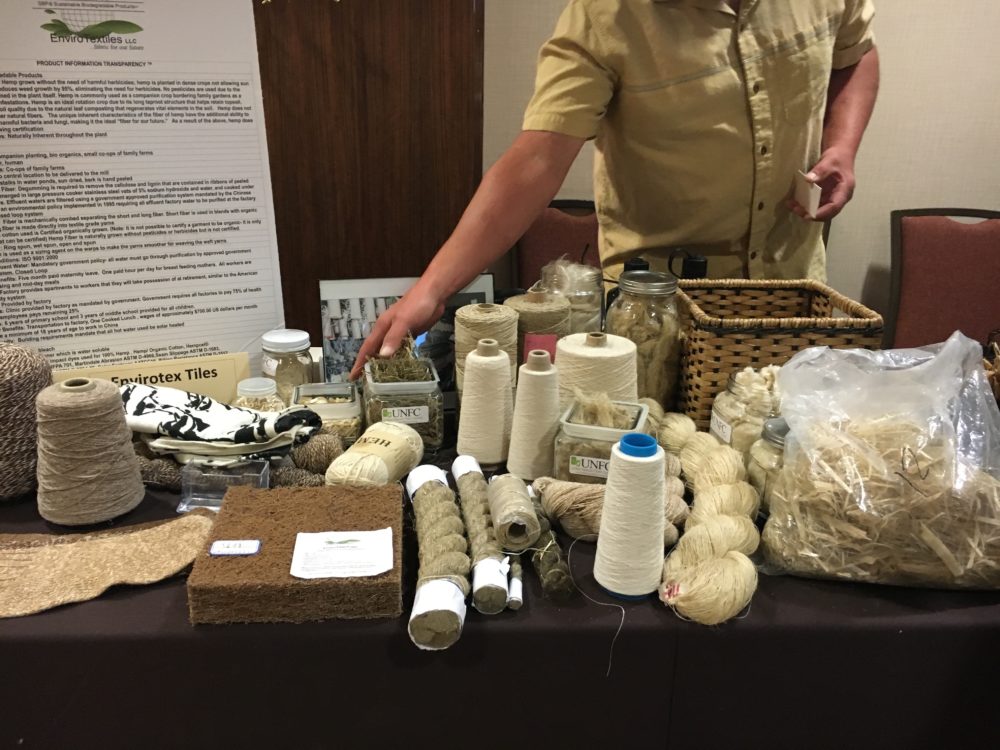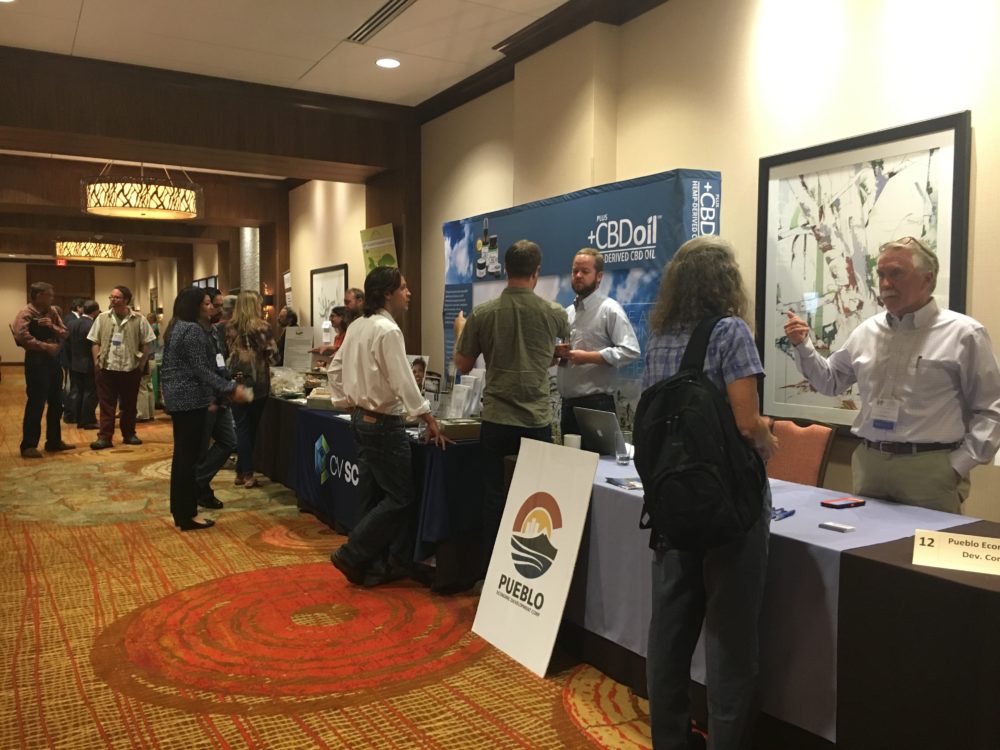Annual conference highlights the future and vast potential of the industrial hemp industry

The annual Hemp Industries Association conference has grown tremendously since it began as a single-day event in the mid-1990s. In September, the 23rd annual event brought farmers, entrepreneurs, advocates and researchers together in Denver for two full days of panel discussions, and a tour of a hemp farm and processing facility.
The endless potential for hemp products was one of the major themes of the event, with experts speaking about everything from hemp-based building materials to CBD and food products.
“Overall, the picture that people are getting at the conference is that this industry is starting to take off since the passage of the Farm Bill,” HIA executive director Eric Steenstra said.
“In the past, there were very few farmers because most couldn’t grow the crop and they didn’t have the same level of interest. … People involved and interested in processing are coming up with ideas to create new products. It’s exciting to see the growth. I’ve been in the hemp industry a long time and there were always new people, but it wasn’t growing at the same pace and it’s been phenomenal since the Farm Bill passed.”
Hemp building materials were among the more intriguing categories, with several companies displaying alternatives to traditional metal and plastic materials.
FlexForm Technologies, for example, supplies auto manufacturers with hemp-based door panels.
Christine Taraskiewicz with USA Hemp Plastics was a first-time attendee of the conference who said she went to “learn the gospel” of hemp.
“The state of the industry is growing,” she said. “It’s healthy in that we are concentrating on a crop, creating jobs and creating more products being made in the United States.”

A wide range of hemp-based products, including rope, paper and building materials, were on display at the 23rd annual Hemp Industries Association conference. Photo by Morgan Smith.
Meanwhile, Chad Ulven comes to the hemp industry with a different perspective. Ulven, who has a Ph.D. in materials engineering, conducts research on natural fibers as an associate professor at North Dakota State University. He’s also the chief technology officer for c2renew, which develops unique bio-composites for injection molding.
“There’s a good energy around trying to domestically produce industrial hemp,” Ulven said. “I’d like to see more opportunities to stimulate rural economy and develop technology that helps stimulate being able to grow a product that has two or three revenue sources.”
CBD production was another major topic of discussion.
“It might be 10 years from now, but I think CBD is going to be approved by the Food and Drug Administration,” Taraskiewicz predicted. “I think you’re going to see CBD as one of the compounded nutraceuticals.”
As domestic hemp extraction becomes increasingly prevalent, CBD companies are thinking about the future. Experts agree that it’s essential to create higher industry standards, and for the industry to stay up to date on extraction methods. However, industry insiders disagree about whether the CBD bubble may be nearing the point of bursting — the subject drew a wide range of opinions during one of the conference’s panel discussions.
Currently, CBD producers say they’re having trouble with standardized testing and the wide variance between labs, while other companies are concerned with consumer-focused efforts and marketing.
With that in mind, Bluebird Botanicals has changed is product labeling to use the phrase “hemp-extract” rather than “CBD.” The company also allows consumers to view certificates of laboratory analysis or track product through the manufacturing process for added layers of transparency between the manufacturer and the end user.
Experienced growers and rookies alike learned cultivation tips from Garry Meier, a farmer and agrologist with Canada-based Hemp Genetics International. Meier covered everything from the importance of seed size to weed and harvest management techniques to soil properties. Meier suggested shallow seeding with sufficient moisture. He said sandy soils will work with adequate moisture, but farmers should avoid heavy clay, which poses a risk of excess moisture.

CBD oil was a major topic at the 23rd annual HIA conference.
Speakers also emphasized the importance of diversification throughout the event, with examples from Dr. Ethan Russo about the neglected resource of the cannabis root, as well as a panel about how regenerative agriculture can reverse climate change. With so many farmers moving toward monocropping, Steenstra sees hemp as an alternative to that.
“Hemp definitely fits in that category and something that has a pretty diverse potential when it comes to the potential end use of it,” he said. “Hemp has so many potential different aspects between the fiber and core and seed and cannabinoid.”
But before farmers and other entrepreneurs can start breaking ground on businesses in the United States, laws need to change. There are now 31 states with some form of legal hemp, including Florida, Alabama, Rhode Island and Pennsylvania, which all passed laws within the last year.
“The main thing we need to fully allow this industry to take off and flourish is for federal policy to move to the next step to allow fully commercial cultivation,” Steenstra said. “There are still people sitting on the sidelines, waiting to see what’s going to happen with that. That will open up a lot of the investment we need to get processing equipment.”
Organizations like Vote Hemp and the HIA have been at the forefront of educating the public and driving advocacy efforts. And Rick Trojan from Hemp Road Trip has embarked on a journey to specifically raise awareness at universities.
Taraskiewicz believes these initiatives will help the HIA gain traction and increase attendance for future conferences.
“There will be more people learning, people returning who want to speak,” she said, predicting that within a couple years, “the HIA is going to be huge.”
No comments:
Post a Comment